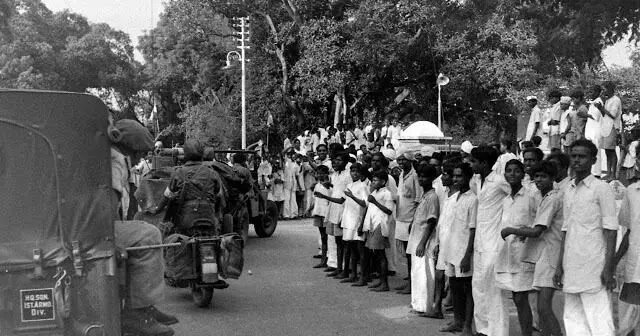Lesser known history about Operation Polo in erstwhile United Adilabad
Adilabad had produced an array of freedom fighters like Daji Shankar Rao, a landlord who turned into a dala commander or commander of an armed squad during those times.
By S. Harpal Singh
Hyderabad: Behind its serene facade, Adilabad does hide a few events of gruesome violence like those related to people's opposition to the tyranny under the Nizam. Being part of Berar province under the princely Hyderabad State, this northern district in Telangana, now divided into Kumram Bheem Asifabad, Mancherial, Nirmal, and residual Adilabad district, was an equally important place for the rollout of Operation Polo or the 1948 Police Action to annex Hyderabad into Indian Union in September 1948.
But there is none surviving who is directly connected with those eventful times to relate the story. And neither is there detailed documentation of the Telangana Armed Struggle or the violence to which the Razakars were subjected to by the "freedom fighters" in the aftermath of the Police Action.
Adilabad had produced an array of freedom fighters like Daji Shankar Rao, a landlord who turned into a dala commander or commander of an armed squad during those times. Others like Ramkishan Rao Deshpande, Challa Srinivas Rao, Basheti Gangaram, Goverdhan Shastri, Veer Waman Rao Deshpande, Kastala Ramkishtu also participated in the Telangana Armed Struggle but did not make a chronicle of their exploits or experiences.
From whatever little is available within the public domain, it becomes clear that the common people were after the blood of the cruel Razakars. According to incidents which got a more than passing mention in one of the private records of those times, seven of them from a village on the banks of Godavari in Khanapur (now in Nirmal district) and 20 from a village close to Adilabad district headquarter were thrown into the flooded Godavari and Penganga, respectively, bound hand and foot.
The newspaper reminiscences of P.K. Dave who served as Deputy Civil Administrator at Nirmal after the transfer of power to civil authority and the documentation on The Defence Archive, the online platform dedicated to covering and documenting a part of Operation Polo and the work of the Indian Armed Forces, comprise perhaps the only material on the subject available on the internet. The five-pronged "thrust" of the Indian Army into Hyderabad had included the capture of Adilabad from the northeast side. The railway line which connected present-day Ballarshah with Sirpur-Kagaznagar was the only proper connection between Nizam's Hyderabad and the Indian Union. However, the two Companies of the 7 Punjab were tasked with capturing the railway bridge on river Wardha which was crucial for the army's entry into Hyderabad.
The army did not face any resistance when it crossed the bridge under camouflage in the dead of the night on September 13, 1948. It soon spread all over Adilabad and began the process to transfer administration to civil authority. Dave gives a little more detail on the crossing of the Wardha river bridge which incidentally continues to survive. He was part of the civil team which followed the Army into Adilabad the next day.
In an article published in 2001, he recalled that the Nizam's defence had a plan to blow the bridge up but the engineer in charge did not do so as he had still not received the necessary instructions. The small Hyderabad force guarding the bridge was asleep and was taken by surprise by the Indian Army.